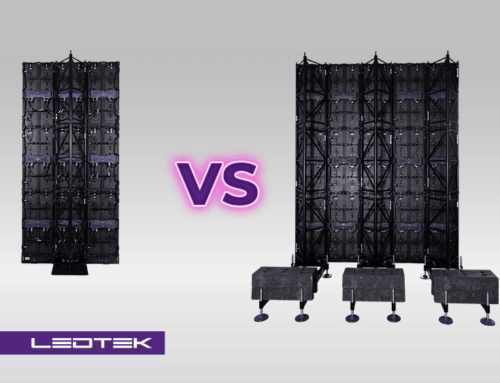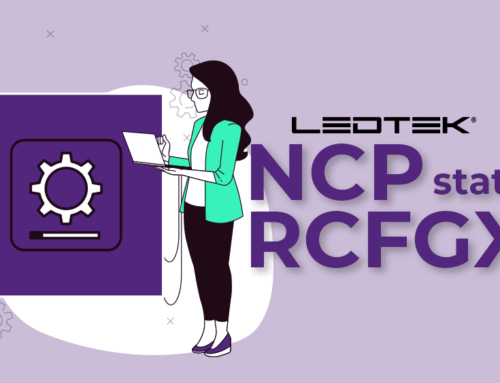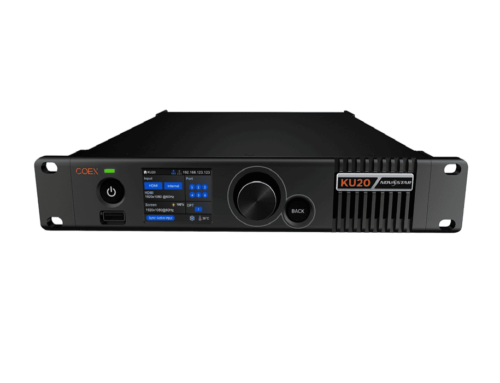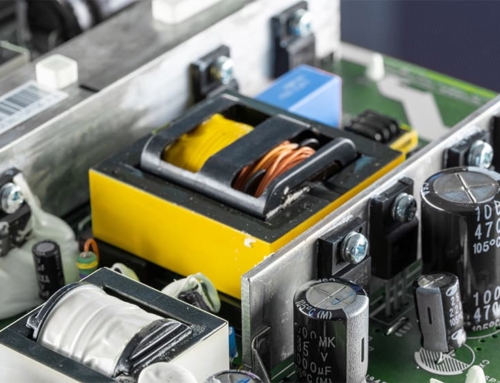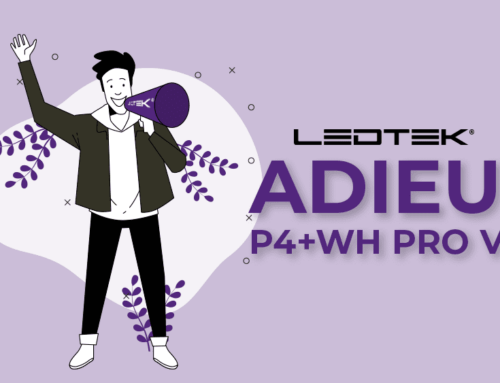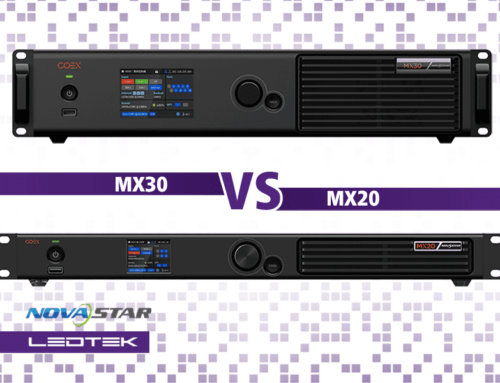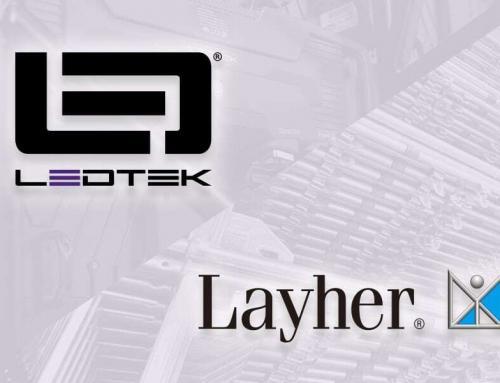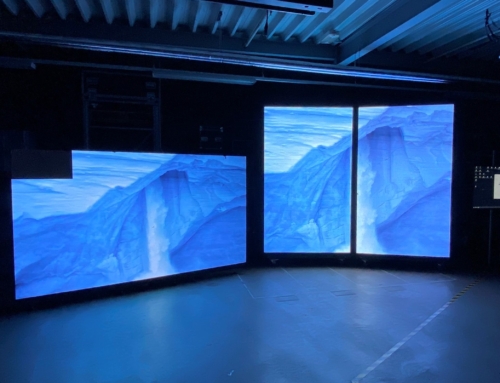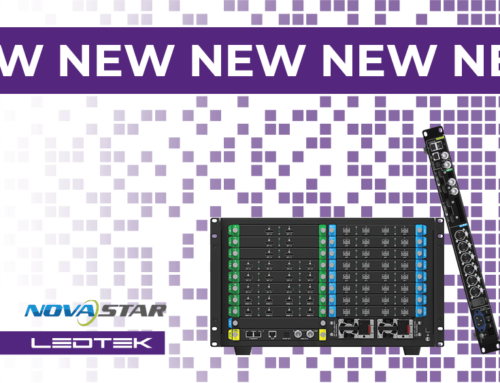Due to current events, we would like to look into the topic of LED walls and humidity. Right now, it is outdoor wall season, and they are in use at numerous festivals and other events outside. This is what we designed them for, and it also means that these walls withstand all kinds of possible environmental influences like heat, wind or rain and snow. The problem that occurs to us every once in a while only happens after the LED cabinets finished their job and are safely stored in their flight cases. This is when mould and other humidity-related damages can happen.
What is mould – and how does it develop?
Mildew is a type of fungi. Its spores are so small that they only become visible under the microscope. These spores are always around us, they are in the air, in the floor under our feet, or even inside our walls. The mean thing is that the spores can survive in a dry environment for months or even years. In order to actually grow they need humidity, nonetheless. The best thing is of course to avoid this. Some mildew cannot only attack the surfaces they grow on, but they can also harm our health.
With mould one might first think about that kind one discovers in the corner of the bathroom, or in a child’s lunchbox that was forgotten over the course of summer vacation, but it can also appear in less obvious places. Unfortunately, one of these places are the transport cases of our LED cabinets. It is known that mildew feels comfortable in humid areas. This is the reason why mould develops in flight cases: the boxes make a humid climate and high air moisture that cannot be transported away due to a lack of ventilation.

Humidity in the transport box
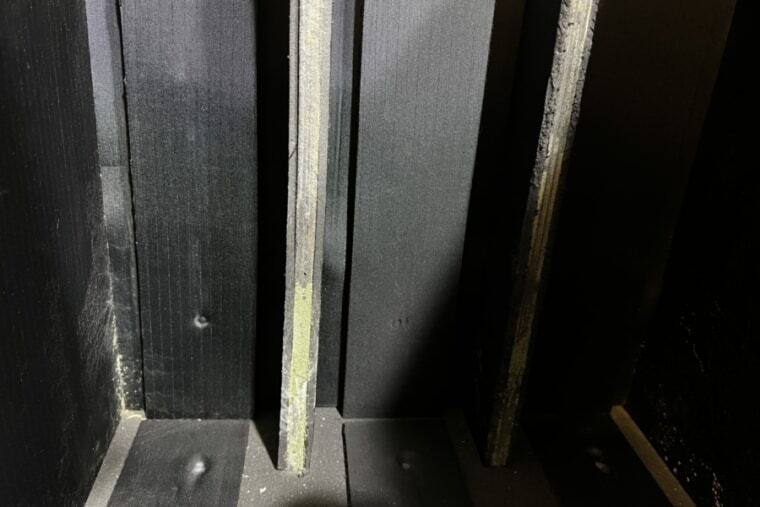
The aftermath: mould
Rain vs humidity – the small differences
Our outdoor LED walls can of course be used in any weather. They do not mind any rain because they have IP code 65. This means that they are protected against touch, foreign substances and water according to DIN EN 60529 (degrees of protection provided by enclosures). The first code digit (IP6X) means that the LED wall has a complete protection against contact and is dust-proof, so that not even the smallest particles can percolate through the case. The second digit (IPX5) names the degree of protection from water. In our case a protection against jet water from any direction exists.
The individual LEDs themselves also comply with this DIN standard. The manufacturer NationStar subjects its LEDs a “water proof test”. Here, a certain number of individual LEDs is put into water of 1m depth for 24 hours. This is to ensure that the LEDs withstand a lot and really meet the requirements for outdoor use.
Hence, this means that raindrops cannot harm the LED wall at all. The problem is not the direct contact with water, but the long storing of the LED walls in an environment with a high humidity – meaning in their cases.
With this, not only mould develops in the cases, but also deficiencies can occur on the LED cabinets. Individual LEDs, thus individual pixels, can fail and disturb the overall picture. This avoidable problem must be prevented.
The right way to deal with moisture – this is what you can do
The good thing is that you are not simply at the mercy of this problem but can actively work against it. The right handling of the LED cabinets and the Flightcases can save you some trouble (remember that self-inflicted moisture damage is not covered by the warranty). We have seen it a couple of times: at the festival, the transport cases stand somewhere in the meadow, it starts to rain, and moisture can grow in the box. And although the LED cabinets are outdoor-ready, the cases are not. To protect the LED modules from impacts and shocks during transport, they are padded on the inside. This padding also makes it easy for moisture to penetrate.
The transport boxes are therefore the first point to start with. Store the cases, even the empty ones, as dry as possible. Make sure the underground is possibly dry and stack the boxes. When they are outside, it is recommendable to use a tarp to cover them.
Furthermore, make sure that the cases, as well as the LED cabinets are dry and clean before you start packing. LED outdoor modules are only able to compensate for the surrounding moisture via the warming LEDs in operating mode. If the LED wall is not in use, it must be completely dry to avoid damage. To dry your wall safely, there are two different methods. It depends on the scenario you want to choose. Do you want to dismantle the wall again after a use and store it in the boxes? Then the drying process is pretty simple. You can switch the wall to white and run it at 100% brightness for 20 to 30 minutes. The wall reaches a temperature of 65°C so that any residual moisture on the wall evaporates. When the LED wall was actually exposed to rain so that in any case splash water remains on it, the drying process should be 40-50 minutes. If you do not have the time on site, you should set up the wall again under dry conditions after transport and subject it to the drying process. Do not leave damp LED cabinets in the boxes.
If you have not used the LED wall for longer, so that enough time has passed for humidity to develop in the cabinets, and you now want to use it again, then a quick start is not a good idea. An immediate operation at 100 percent could due to the humidity in the cabinets cause damage on the LEDs. Instead, the wall should be built and regulated to 0% brightness by a connected controller at the beginning. You can then increase this bit by bit. This means that you start with a white image on the lowest brightness and increase this ca. every 1 ½ hours by one step. This makes a slower temperature rise that causes internal or external moisture to evaporate. The longer the wall was not operated, the longer the periods between the brightness increase should be. This process should be run when the LED wall had not been used in more than 15 days. Generally speaking, the more often an LED wall is in use, the better it is for the technology.
Dry LED cabinets won’t do a lot if their case is damp. Thus, make sure to also clean and dry the cases before you store everything. The cases should be aired out well and not be stored in a permanently wet area. NationStar mentions that the LEDs should not be in an area with temperatures over 30°C and more than 60% humidity permanently. It is advisable to add a moisture-removing material to the stored LEDs and to check the humidity level by means of a humidity indicator.
Caution is the mother of the LED box
It shows that rain and humidity have very different effects on LED technology and the transport cases. But fortunately, no one is at the mercy of mouldy flight cases. With simple, precautionary measures, moisture damage can be prevented. We hope that our explanations were of use for you.
Tips on how to clean an LED wall you can find in this article.
If you have further questions, don’t hesitate to get in touch with us. Give us a call at +49 551 492 493 44 or send an email to vertrieb@ledtek.de.




